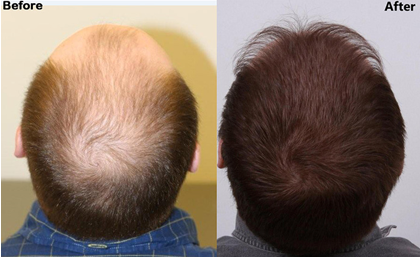It may be a little unpleasant, but we have to accept that hair loss is a normal part of aging, just like wrinkles and memory issues. If you are self-conscious about your thinning hair, there are any number of steps you can take to restore your hair, be it locks, straight or curls. In this article, we’ll focus on the two primary methods of surgical hair restoration — Follicular Unit Strip Surgery (FUSS) and Follicular Unit Extraction (FUE).

Follicular Unit Strip Surgery (FUSS)
A follicular unit strip surgery (FUSS) can be classified as a hair restoration method that takes hair from the back of the scalp (specifically, the occipital area) and transfers it to the other parts of the scalp. This allows hair to grow in areas of the scalp that were previously balding or otherwise producing thinning hair.
FUSS restores hair growth by removing an entire strip of tissue from the donor area. Microscopic dissection techniques are then performed to transplant hair in the balding areas of the scalp. In one single session, thousands follicular units can be transplanted by the surgeons, which contain oil glands, nerves and muscles.
What Happens During FUSS Surgery?
During FUSS surgery, the following sequence takes place:
- The surgeon cuts a strip of tissue from the donor zone located at the back of the scalp (the occipital scalp) and bilaterally above the ears, sometimes into the temple regions.
- The donor strip is divided into thousands of individualized follicular units by technicians using stereoscopic dissecting microscopes.
- The follicular units are chilled to preserve their structural integrity.
- New recipient sites are created in the patient’s scalp tissue using tiny needles or blades.
- The newly created follicular units are inserted into the scalp tissue so that new hair may grow.
Follicular Unit Extraction (FUE)
Follicular Unit Extraction (FUE), as opposed to the FUSS procedure, is a hair transplant method in which the doctor extracts the follicular units of hair, from the donor area of your head, one by one.
The surgeon uses a small microneedle, which punches a tiny incision around a hair follicle before extraction. The follicular unit is extracted with the use of a forceps. The punch is very tiny either 1mm or .75 mm, hence a very small scar is left which is usually almost invisible. There is more transection of grafts with FUE and more incidences of buried grafts.
Each unit contains one to four hairs. These one to four hair groupings (called follicular unit grafts) are then transplanted into the balding areas of your head. In this method, there is no need for the surgeon to make a long incision in the donor area, as in the FUSS procedure.
This is an ideal method of surgery for patients who like to sport a short hair. This method is also recommended for patients who have a tight scalp or have previously undergone the FUSS method but with little or no success.
Am I eligible for Follicular Unit Extraction?
- If you are diagnosed with a condition which prevents growth of natural hair.
- If you are above 25 years of age and have been balding for many years, and now your rashes on the scalp hair loss has stabilized.
- If you have no issues with supply of donor hair.
- If you find other medically proven hair loss treatment modalities do not work for you.
- If the hair loss is due to traumas such as burns or cosmetic procedures such as facelift.
- If you are at risk for thickened donor scars due to excessive scalp tightness or laxity.
- If you are in good health.
- If you would like to sport short hairstyles.
- If you do not have a problem to shave your head. (The donor area needs to be shaved for an FUE procedure.)
What happens during the FUE procedure?
The follicular unit extraction method involves the following procedure:
At the outset, the doctor anesthetizes the scalp, then using a small microneedle, the doctor makes a circular incision, less than 1 mm in diameter, around a follicular unit on your head, to isolate a graft. After which using a tweezer-like instrument, the doctor extracts the follicular unit from your donor area. Multiple follicular units are extracted this way. Before the process of harvesting the follicular units, tiny holes are drilled on your scalp, where hair loss has occurred.
The follicular units are then placed in these holes, from where they gradually start yielding hair.
A disinfectant is gently applied to your head after the procedure. At the end of the procedure, the doctor will ask you to wear a cap to protect your head for a few days.
One of the advantages of the FUE procedure is that it has more donor site options, as grafts can be extracted from other parts of your body as well.
Advantages of an FUE procedure
Some of the advantages of the FUE procedure include:
- It is a minimally invasive surgery than FUSS with no visible scarring in the donor area
- It is ideal for short sessions and for patients in early stages of hair loss
- It works well for patients who would like to sport short hairstyles
- It is ideal for men who have no problem in shaving their heads
- Not only on the scalp, FUE is ideal for mustache or eyebrow replacement
Are the results of FUE procedure permanent?
Hair transplant results are generally considered to be permanent.
For Enquiries and Online Appointments
For more detailed information about Hair Transplantation, please send us a message today.

